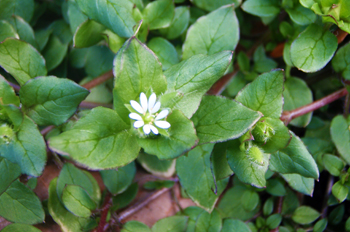When the time comes to practice survival skills, or use them for real, the first question is usually “what’s for dinner?” Despite the fact that shelter, water, signaling and fire are more important than food, the menu is the age old subject that most people worry about.
When it comes to food, you should be asking what’s abundant, nutritious and obtainable with the least expenditure of energy? Spring is one of the leanest seasons of the year. Sure there is plenty of plant material to eat, but it is almost all low in calories.
Here are a few guidelines to think about in wild food collection:
• Seek out the most calorie rich food sources available. This is usually the pursuit of plant or animal fats, like nuts that have a high oil content, fat little animals, or fat big animals. Good sources of sugars and starches are also very important, but remember that fat has twice the calories of protein or carbohydrates per unit (gram, ounce, wooden spoonful, etc.).
• Don’t spend more than you make! If you burn 2,000 calories to get 200 calories, you won’t last too long in your pursuit of wild foods. Try that with your household budget, too.
• Learn about wild plants from a good field guide, or better yet, a reputable class. Then make 100 percent certain that it is the exact genus and species of plant that you think it is by checking it against a good field guide. My favorite is Peterson’s field guide to edible wild plants. There are about 400 plants listed in the book.
So now you’ve read a book, taken a class, gone out camping with someone experienced, and you’re ready to find your own food. Let’s check the current spring menu.
-Salad
-More salad
-Residual nuts from last fall, like acorns, black walnuts, hickory nuts for a few lucky foragers
-Shoots and other tender spring vegetables
-More salad
-Fish of the day
-For dessert, slightly sweet flowers like Redbud and Violet
That doesn’t sound too bad, right? But there are two main problems with this menu. The first problem is luck. You have to be pretty observant and lucky to find nuts leftover from two seasons ago, or to catch any decent number of fish. The second problem with this menu is the volume of plant matter and the accompanying fiber in the pursuit of 2,000 calories a day.
This is a year round problem, not just a spring time issue. If the average wild salad is about 50 calories, and let’s say conservatively 20 grams of fiber (it’s probably a lot more fiber on average) you’d need 40 bowls to get 2,000 calories from just salad. You couldn’t choke that much down, and if you did, you couldn’t access all those calories because of your impacted and fatally clogged intestines. You are not a goat; only they can get all the calories from an 800-gram fiber wad in their gut. We’re omnivores. We need variety.
So for fats and proteins, we need meat, fish and/or nuts – two or three fish, a couple handfuls of shelled out nutmeats or one fat squirrel will cover our daily fat and protein requirements. Now all we need to finish out our wild foods diet are some carbohydrates in the form of sugars and/or starches.
Get a few cattail shoots when they are a foot tall. Just squeeze them hard as low on the stalk as you can grab, pull up, and they’ll pop off in your hand. Boil the bottom ends in water for 10 minutes and suck out the starchy core. It’s a good, root-crop-tasting starch source and a fist full is probably about 50-100 calories, maybe a little more. Other good spring time starch and sugar sources include burdock roots, wild carrot, acorns, spring beauty corms and the like. Just remember that a cup (8 ounces) packed with raw or cooked, non-starchy vegetables are about 50 calories, give or take. One cup of starchy nuts or vegetables (like acorns or starchy roots) will be between 200-500 calories.
Try to mix up and balance your outdoors diet as much as you can, and use caution and reason in your harvest of wild foods. Armed with these guidelines, you’ll be well on your way to not starving to death.
And last but not least — if you are in doubt, DON’T eat it!
Good luck foraging, and if you are not sure about something – seriously — DON’T EAT IT!
Photo: Chickweed for a spring salad
